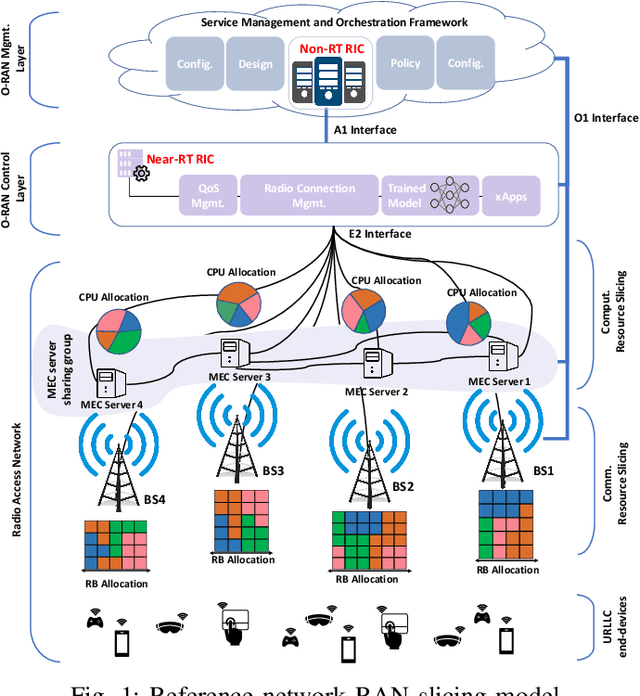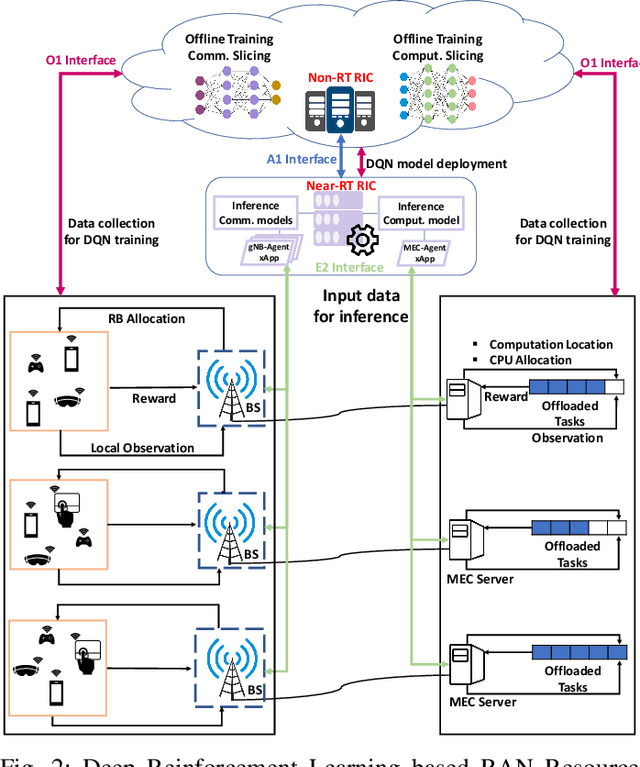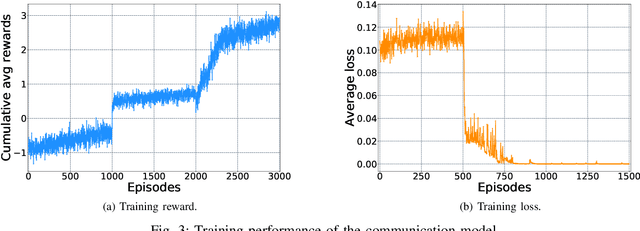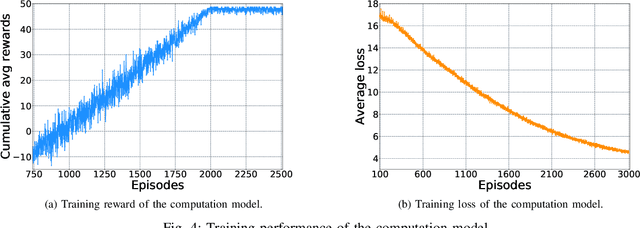Abdellatif Kobbane
Hierarchical Federated Learning for Crop Yield Prediction in Smart Agricultural Production Systems
Oct 14, 2025Abstract:In this paper, we presents a novel hierarchical federated learning architecture specifically designed for smart agricultural production systems and crop yield prediction. Our approach introduces a seasonal subscription mechanism where farms join crop-specific clusters at the beginning of each agricultural season. The proposed three-layer architecture consists of individual smart farms at the client level, crop-specific aggregators at the middle layer, and a global model aggregator at the top level. Within each crop cluster, clients collaboratively train specialized models tailored to specific crop types, which are then aggregated to produce a higher-level global model that integrates knowledge across multiple crops. This hierarchical design enables both local specialization for individual crop types and global generalization across diverse agricultural contexts while preserving data privacy and reducing communication overhead. Experiments demonstrate the effectiveness of the proposed system, showing that local and crop-layer models closely follow actual yield patterns with consistent alignment, significantly outperforming standard machine learning models. The results validate the advantages of hierarchical federated learning in the agricultural context, particularly for scenarios involving heterogeneous farming environments and privacy-sensitive agricultural data.
Efficient Collaborations through Weight-Driven Coalition Dynamics in Federated Learning Systems
Jan 22, 2024Abstract:In the era of the Internet of Things (IoT), decentralized paradigms for machine learning are gaining prominence. In this paper, we introduce a federated learning model that capitalizes on the Euclidean distance between device model weights to assess their similarity and disparity. This is foundational for our system, directing the formation of coalitions among devices based on the closeness of their model weights. Furthermore, the concept of a barycenter, representing the average of model weights, helps in the aggregation of updates from multiple devices. We evaluate our approach using homogeneous and heterogeneous data distribution, comparing it against traditional federated learning averaging algorithm. Numerical results demonstrate its potential in offering structured, outperformed and communication-efficient model for IoT-based machine learning.
Applications of machine learning and IoT for Outdoor Air Pollution Monitoring and Prediction: A Systematic Literature Review
Jan 03, 2024Abstract:According to the World Health Organization (WHO), air pollution kills seven million people every year. Outdoor air pollution is a major environmental health problem affecting low, middle, and high-income countries. In the past few years, the research community has explored IoT-enabled machine learning applications for outdoor air pollution prediction. The general objective of this paper is to systematically review applications of machine learning and Internet of Things (IoT) for outdoor air pollution prediction and the combination of monitoring sensors and input features used. Two research questions were formulated for this review. 1086 publications were collected in the initial PRISMA stage. After the screening and eligibility phases, 37 papers were selected for inclusion. A cost-based analysis was conducted on the findings to highlight high-cost monitoring, low-cost IoT and hybrid enabled prediction. Three methods of prediction were identified: time series, feature-based and spatio-temporal. This review's findings identify major limitations in applications found in the literature, namely lack of coverage, lack of diversity of data and lack of inclusion of context-specific features. This review proposes directions for future research and underlines practical implications in healthcare, urban planning, global synergy and smart cities.
A Comparative Evaluation of FedAvg and Per-FedAvg Algorithms for Dirichlet Distributed Heterogeneous Data
Sep 03, 2023Abstract:In this paper, we investigate Federated Learning (FL), a paradigm of machine learning that allows for decentralized model training on devices without sharing raw data, there by preserving data privacy. In particular, we compare two strategies within this paradigm: Federated Averaging (FedAvg) and Personalized Federated Averaging (Per-FedAvg), focusing on their performance with Non-Identically and Independently Distributed (Non-IID) data. Our analysis shows that the level of data heterogeneity, modeled using a Dirichlet distribution, significantly affects the performance of both strategies, with Per-FedAvg showing superior robustness in conditions of high heterogeneity. Our results provide insights into the development of more effective and efficient machine learning strategies in a decentralized setting.
Vehicles Control: Collision Avoidance using Federated Deep Reinforcement Learning
Aug 04, 2023Abstract:In the face of growing urban populations and the escalating number of vehicles on the roads, managing transportation efficiently and ensuring safety have become critical challenges. To tackle these issues, the development of intelligent control systems for vehicles is paramount. This paper presents a comprehensive study on vehicle control for collision avoidance, leveraging the power of Federated Deep Reinforcement Learning (FDRL) techniques. Our main goal is to minimize travel delays and enhance the average speed of vehicles while prioritizing safety and preserving data privacy. To accomplish this, we conducted a comparative analysis between the local model, Deep Deterministic Policy Gradient (DDPG), and the global model, Federated Deep Deterministic Policy Gradient (FDDPG), to determine their effectiveness in optimizing vehicle control for collision avoidance. The results obtained indicate that the FDDPG algorithm outperforms DDPG in terms of effectively controlling vehicles and preventing collisions. Significantly, the FDDPG-based algorithm demonstrates substantial reductions in travel delays and notable improvements in average speed compared to the DDPG algorithm.
Federated Learning for Water Consumption Forecasting in Smart Cities
Jan 30, 2023Abstract:Water consumption remains a major concern among the world's future challenges. For applications like load monitoring and demand response, deep learning models are trained using enormous volumes of consumption data in smart cities. On the one hand, the information used is private. For instance, the precise information gathered by a smart meter that is a part of the system's IoT architecture at a consumer's residence may give details about the appliances and, consequently, the consumer's behavior at home. On the other hand, enormous data volumes with sufficient variation are needed for the deep learning models to be trained properly. This paper introduces a novel model for water consumption prediction in smart cities while preserving privacy regarding monthly consumption. The proposed approach leverages federated learning (FL) as a machine learning paradigm designed to train a machine learning model in a distributed manner while avoiding sharing the users data with a central training facility. In addition, this approach is promising to reduce the overhead utilization through decreasing the frequency of data transmission between the users and the central entity. Extensive simulation illustrate that the proposed approach shows an enhancement in predicting water consumption for different households.
Communication and Computation O-RAN Resource Slicing for URLLC Services Using Deep Reinforcement Learning
Feb 13, 2022



Abstract:The evolution of the future beyond-5G/6G networks towards a service-aware network is based on network slicing technology. With network slicing, communication service providers seek to meet all the requirements imposed by the verticals, including ultra-reliable low-latency communication (URLLC) services. In addition, the open radio access network (O-RAN) architecture paves the way for flexible sharing of network resources by introducing more programmability into the RAN. RAN slicing is an essential part of end-to-end network slicing since it ensures efficient sharing of communication and computation resources. However, due to the stringent requirements of URLLC services and the dynamics of the RAN environment, RAN slicing is challenging. In this article, we propose a two-level RAN slicing approach based on the O-RAN architecture to allocate the communication and computation RAN resources among URLLC end-devices. For each RAN slicing level, we model the resource slicing problem as a single-agent Markov decision process and design a deep reinforcement learning algorithm to solve it. Simulation results demonstrate the efficiency of the proposed approach in meeting the desired quality of service requirements.
Short-term Multi-horizon Residential Electric Load Forecasting using Deep Learning and Signal Decomposition Methods
Feb 01, 2022



Abstract:With the booming growth of advanced digital technologies, it has become possible for users as well as distributors of energy to obtain detailed and timely information about the electricity consumption of households. These technologies can also be used to forecast the household's electricity consumption (a.k.a. the load). In this paper, we investigate the use of Variational Mode Decomposition and deep learning techniques to improve the accuracy of the load forecasting problem. Although this problem has been studied in the literature, selecting an appropriate decomposition level and a deep learning technique providing better forecasting performance have garnered comparatively less attention. This study bridges this gap by studying the effect of six decomposition levels and five distinct deep learning networks. The raw load profiles are first decomposed into intrinsic mode functions using the Variational Mode Decomposition in order to mitigate their non-stationary aspect. Then, day, hour, and past electricity consumption data are fed as a three-dimensional input sequence to a four-level Wavelet Decomposition Network model. Finally, the forecast sequences related to the different intrinsic mode functions are combined to form the aggregate forecast sequence. The proposed method was assessed using load profiles of five Moroccan households from the Moroccan buildings' electricity consumption dataset (MORED) and was benchmarked against state-of-the-art time-series models and a baseline persistence model.
 Add to Chrome
Add to Chrome Add to Firefox
Add to Firefox Add to Edge
Add to Edge